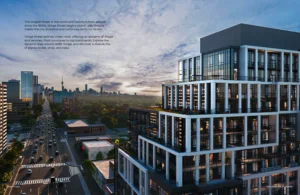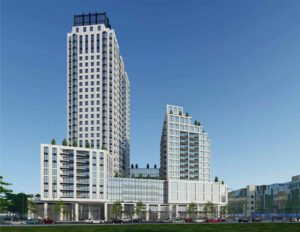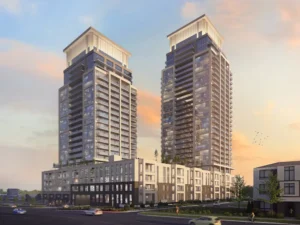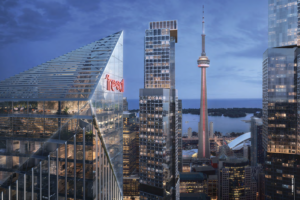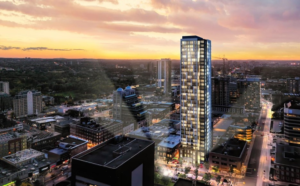dtk Condos- 워털루-키치너



키치너 지역의 가장 높은 빌딩이 옵니다.
파격적인 인센티브 리스트:
$0 Development Levies
$0 Assignment Charge
Free Leasing and Property Management Service 1 year
Free Smart Home Tech Package
Highlights:
– 97 Walkscore
– Steps to new $868 Million ION LRT Transit System
– New announcement $11 billion high-speed rail Kitchener to Toronto
– 8,600 tech jobs added 2011-2016. Faster growth rate than Silicon Valley
– Tech companies attracted $291.1 Million in Venture Capital in 2017
– Half the price of Toronto condos



PLATINUM SALES BRIEFING
Downtown Location:
97 Walk Score
Steps from ION Rapid Transit System. Frederick stop is less than a minute walk from the site
10-minute walk to $43M Transit Hub
Downtown Kitchener has over 90 retail businesses and 100 food and drink providers. From the internationally-recognized KW Symphony to the Centre in the Square Performance Centre, from polka-ing at the world’s second largest Bavarian Festival, Oktoberfest, to crooning at Kitchener’s lively Blues Festival, from taking it all in the Contemporary Art Forum to taking to the hills at Chicopee Ski Resort, arts, entertainment and recreation.
Technology and Job Growth:
Following a targeted, long-term city strategy to attract public and private reinvestment, Kitchener projects employment in the downtown core, including the Innovation District, to rise to 18,500 by 2020, up from 11,600 in 2009.
According to CBRE’s 2017 Scoring Canadian Tech Talent Report, Waterloo Region added 8,400 tech jobs from 2011 to 2016, a 65.6% growth rate, outpacing the growth of Silicon Valley, making it the second-fastest rate of tech labour pool growth in North America after Charlotte, North Carolina at 77.1%.
Waterloo Region is a hub of tech triumphs. Google, Blackberry, Microsoft, Shopify and Communitech are a few fixtures to name.
Communitech -Founded in 1997, Communitech is a private innovation hub committed to making Waterloo Region a global innovation leader. Today, they are the reason behind the success of a community of over 1400 companies from small startups to global initiatives. Their 80,000 Sq. Ft. facility is a place for congregation, collaboration and realization. It is a 10-minute walk from the site.
Google Kitchener – Located in the heart of Waterloo Region’s tech sector in downtown Kitchener, Google’s biggest research and development office in Canada is a 10-minute walk from the site.
Design2Learn – D2L’s educational software technology is being used by customers in higher education, K-12, healthcare, government, and the enterprise sector is a 10-minute walk.
In 2017 Waterloo region tech companies attracted $291.1M in Venture Capital. A 14% increase from 2016. Talent attraction and retention in an ongoing strategic priority in the region.
$766,000,000 was recently invested into the new Regional Courthouse facilities, which are across the street from Duke Tower Kitchener.
The City’s recently approved Perimeter Development Corp.’s new 120,000-square foot, six-storey, glass-fronted office on King Street West will house Gowling WLG as lead tenant.
Deloitte Canada – is relocating its regional office into a refurbished 28,000 square foot brick-and-beam former industrial warehouse turned into a collaborative workspace for tech-savvy employees.
Rezoning and major tenant acquisitions reinforce Kitchener’s ambitions to transform its former industrial core into a thriving tech-friendly downtown.
The 2017 Global Startup Ecosystem Report suggests that the Toronto and Waterloo Regions are increasingly behaving as one ecosystem. To date, an estimated 2,700 startups thrive here thanks to world-class talent, entrepreneurial culture, an affordable rental market and a global base of customers that all look for inspiration and opportunity.
The University of Waterloo, Wilfrid Laurier University and Conestoga College serve as a hub for world-class research and idea generation for industries operating here. These leading-edge educational facilities produce some of the highest calibre talents in the world, generating a deep talent pool of professionals who continually regenerate our local economy and labour force.
Kitchener is located in Canada’s Technology Triangle (CTT) which is a not-for-profit, public-private regional economic development partnership that markets the competitive advantages of the Waterloo Region to the world and works to attract new businesses, investment and talent to the Region.
Waterloo Region is a top-tier entrepreneurial ecosystem and one of the most dynamic economies in North America. Kitchener, part of the greater Waterloo Region is a unique and expanding community built on innovation, education and collaboration.
Population Growth:
Waterloo Region has the 10th largest population in Canada and the 4th largest in Ontario, making it one of the largest and fastest growing regions in the Province.
Waterloo Region’s growth rate was 5.5%, between 2011 and 2016, a figure which exceeded both provincial and national growth rates of 4.6% and 5% respectively.
In 2016, the Census population of Waterloo Region was 535,154. Between 2011 and 2016, the population of Waterloo Region grew by 28,058 individuals, approximately 5,600 people per year.
Ontario’s Growth Plan projects that Waterloo Region’s population will grow by 35% people over the next 15 years.
Real Estate Environment:
Waterloo Region’s diverse and thriving economy is reflected in major industries of advanced manufacturing, information and communications technology, automotive, business and financial services. Located approximately an hour west of Toronto, Waterloo Region is a key partner within the globally recognized Toronto-Waterloo Innovation Corridor.
Never before has Kitchener’s real estate market been more robust. According to The Region of Waterloo 2016 Building Activity and Growth Monitoring, Report, (PDL-CPL-17-10) The total value of building permits issued for new construction in Waterloo Region was 1.4 billion dollars in 2016, a substantial increase of 36% over 2015 values and more than 30% higher than the 10-year average.
New data collected by the Kitchener-Waterloo Association of Realtors in 2017 illustrates that the average sale price for a home in Kitchener Waterloo increased by 20.7 percent year-over-year. This meant an increase from $387,291 to $467,513.
2017 was the first time average sale prices jumped above $400,000, just six years after exceeding the $300,000 threshold. An increase to $500,000 within one year is foreseeable, as RE/MAX has forecast an average sale price of $499,233 for Waterloo Region in 2018.
The need for both urban and affordable condominium and rental accommodations is evident. Demand for rental accommodations across the Region increased by a record-setting 7% while vacancy rates dropped to a very low 1.9%. A number of factors contributed to this spike in demand including strong immigration, a 40% increase in study permit holders and an increasing senior population.
Downsizers are attracted to the new luxury rental supply as these units are an alternative to condominium apartment ownership without the associated fees.
High employment rates and increased wages have also encouraged more youth to move out of their parent’s homes to form an independent household. Census data indicates 86% of these identifying as renters.
Between July 2016 and June 2017, 1,293 condominium apartments were completed with 30.3% of those being rentals. The rental condominium apartment vacancy rate was a mere 0.7% in September 2017, indicating a lack of supply and a high demand for luxury rental options in new building with more amenities.
These statistics also verify that the rental demographic is willing and wanting to pay a premium for a more luxurious condominium rental rather than opting for traditional purpose-built rental accommodations:

Affordability Gap:
New data collected by the Kitchener-Waterloo Association of Realtors in 2017 illustrates that the average sale price for a home in Kitchener-Waterloo increased by 20.7 percent year-over-year. This meant an increase from $387,291 to $467,513. Detached homes sold for an average price of $549,046, an increase of 21.5 percent compared to 2016.
2017 was the first time average sale prices jumped above $400,000, just six years after exceeding the $300,000 threshold. An increase to $500,000 within one year is foreseeable, as RE/MAX has forecast an average sale price of $499,233 for Waterloo Region in 2018. With apartment style condominiums priced between $250,000 and $350,000, this affordability gap is leading condo demand.
Transit Investment:
$868M was invested into developing KW’s ION Rapid transit system. When ION light rail launches in 2018, users can pay one fare and transfer seamlessly between bus and light rail services. Ion will streamline transit within the Region, operating on a 19-kilometre, 19 station route spanning from Conestoga Mall in Waterloo to Fairway in Kitchener.
Over 2 Billion invested in transit since 2009.
$43M investment in the Kitchener Transit Hub located two ION Rapid Transit stops from DTK
Future transit hub will provide 90-minute electric go train commute to Toronto every 15 mins.
DTK is located steps from the Frederick Street ION station stop, 10-minute walk from Via Rail and GO Transit commuter station and minutes from a future multi-modal transit hub that would complete the province’s promised high-speed rail link between Toronto and Windsor by 2025.
With extensive public transportation, residents in Kitchener enjoy a reasonable 16-minute median commute time. Drastically lower than commute times within larger metropolitan areas such as Toronto.
10 Minute Porter Flights from Waterloo International to Billy Bishop (Starting 2016).
Development Charge Exemption:
For a limited time, The Region of Waterloo is offering development incentives to encourage development in the Downtown Core. This incentive is only offered in a specific area of the downtown core, in which the region recognizes high demand for housing.
Both the Municipal and Regional development charges are waived until early 2019. Investors at DTK can take advantage of this window of opportunity. The expiry of this exemption will make future projects more expensive and/or less frequent, furthering the increase of prices in Downtown Kitchener.
Development charges would typically be in excess of $15,000 per unit and represent an immediate and substantial advantage to purchasing today.
